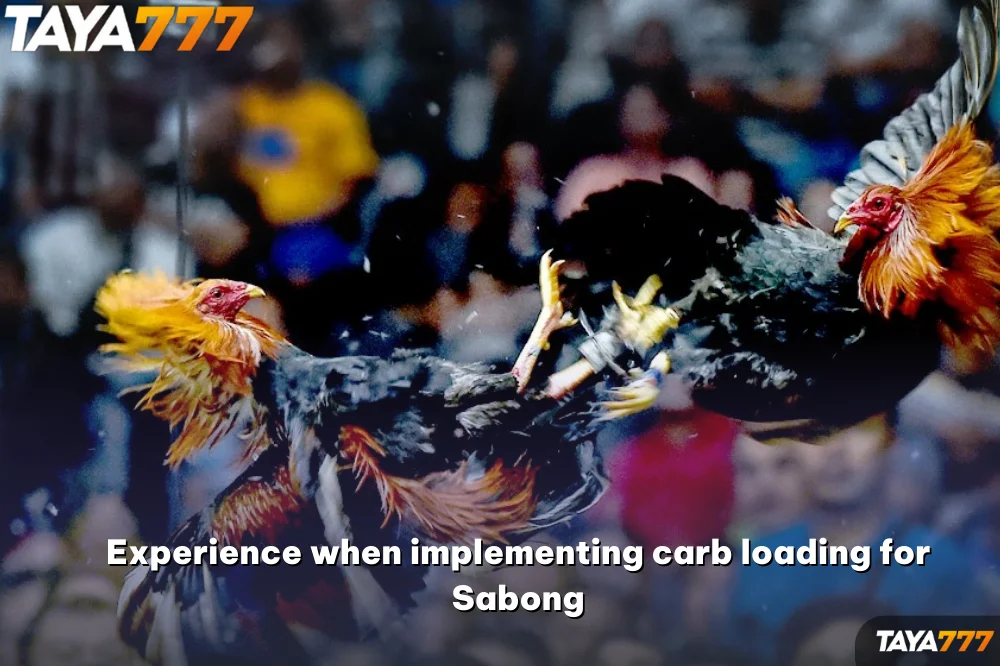Carbo loading for fighting cocks is one of the things that cockfighters need to do before letting their cocks fight before each fight. So what are the benefits of this and how to add carbs to Sabong? Learn more about the carbo-loading method through Taya777’s article below!
Why should you add carbs to Sabong?
Carbo-loading for fighting cocks, also known as “carbo-loading”, brings many essential benefits to fighting cocks before fighting. Below are the reasons why you should use this method of carb loading for Sabong.
- Increase energy: Carbohydrates are the main source of energy for the chicken’s body. When loading carbohydrates, the amount of glycogen (stored form of glucose) in the muscles and liver will be abundantly stored. Glycogen is the “fuel” that helps chickens maintain strength, endurance, and stamina throughout the fight.
- Improve endurance: Carbo-loading helps chickens have enough energy to fight longer, minimizing fatigue and loss of concentration during battle. Thanks to that, the chickens can maintain their best performance from the beginning to the end of the match.
- Enhance recovery ability: After competing, the chicken’s body needs to recover quickly. Carbo loading provides essential nutrients to compensate for the amount of glycogen consumed, helping muscles quickly recover and regenerate energy for the next match.
- Reduce the risk of injury: When muscles are provided with enough energy, muscle contraction and movement coordination will improve, contributing to reducing the risk of injury during competition.
How to add carbs to Sabong you should know
You should only feed your fighting cocks carbs in the last 3 days before fighting. To effectively carbo-feed Sabong, you can follow these steps:
Prepare food
You should only use foods rich in carbohydrates such as corn, wheat, rice, and sweet potatoes,… or you can combine other complementary foods such as vitamins, minerals, and protein,… Choose foods of clear origin, ensuring quality and safety for chickens.
Adjust your diet
You need to divide the diet into 4-5 meals per day so that the chicken can easily digest and absorb. At the same time, avoid feeding chickens that are too full or too hungry during the carb-loading period. The ratio of dietary adjustments you can apply is as follows:
- Day 1: Increase the amount of carbohydrates in the chicken’s diet by 50%.
- Day 2: Increase carbohydrate intake by 70%.
- Day 3: Increase carbohydrate intake by 80%.
Recipe
Below are some popular carbo-loading recipes for Sabong that you can refer to: You can also create different ways to add carbs to Sabong based on the needs and preferences of the chickens.
The ratio of ingredients in the recipe can be adjusted flexibly. You should choose fresh, quality ingredients, and puree the food before feeding it to the chickens to make it easier for the chickens to digest.
- Formula 1: Corn: 60%; Wheat: 20%; Rice: 10%; Sweet potatoes: 10%
- Formula 2: Corn: 70%; Wheat: 15%; Rice: 10%; Vitamins and minerals: 5%
- Formula 3: Corn: 50%; Wheat: 25%; Rice: 20%; Sweet potatoes: 5%
- Formula 4: Corn: 80%; Wheat: 10%; Rice: 10%

Monitor chicken condition
Observe the chicken’s expression to adjust the appropriate amount of carbohydrates. If you see your chicken showing signs of fatigue or loss of appetite, reduce the amount of carbohydrates. On the contrary, if the chicken is still active and healthy, you can increase the amount of carbohydrates.
For example, if the chicken’s basic diet is 100g, you can increase it by 10g on day 13, and 12-20g on day 14. In total, the chicken will have a total of 80% corn in the fight day diet.
Experience when implementing carb loading for Sabong
Carbo-loading is an effective method to increase energy, endurance, and recovery in fighting cocks. However, to achieve the best results and avoid side effects, there are a few important things to keep in mind:
Carbo loading time
You should only do carbo loading in the last 3 days before competing. Do not load carbs too early or too late because this can affect the chicken’s performance.
Carbohydrate intake
Please provide the amount of carbohydrates appropriate to the condition and needs of each chicken. Avoid excessive carbohydrate intake because it can lead to overweight and obesity, affecting the chicken’s mobility. For the best loading, you can consult with experts or a veterinarian.
Carbon type
A combination of simple (fast-burning) and complex (slow-burning) carbohydrates will help you provide your chickens with sustained energy. For example: Corn is a source of simple carbohydrates, while wheat and rice are sources of complex carbohydrates.
Diet

You should combine carbohydrate loading with a balanced diet, full of vitamins, minerals, and protein for chickens. Avoid feeding your chickens food that is too high in fat or sugar. During the process of carbo-loading chickens, you also need to provide enough clean water and change it daily.
Stop carb loading
You should stop eating carbs 12 hours before the fight so the chickens have time to digest food and avoid bloating. Carbo loading too close to competition time can make the chickens uncomfortable, affecting their performance.
Conclusion
Hopefully, this article by Taya777 on how to add carbs to fighting cocks has helped you better understand this technique of caring for fighting cocks. It can be seen that the correct carbohydrate intake brings many benefits to chickens that cockers should not ignore. Wishing you success in taking care of Sabong!

